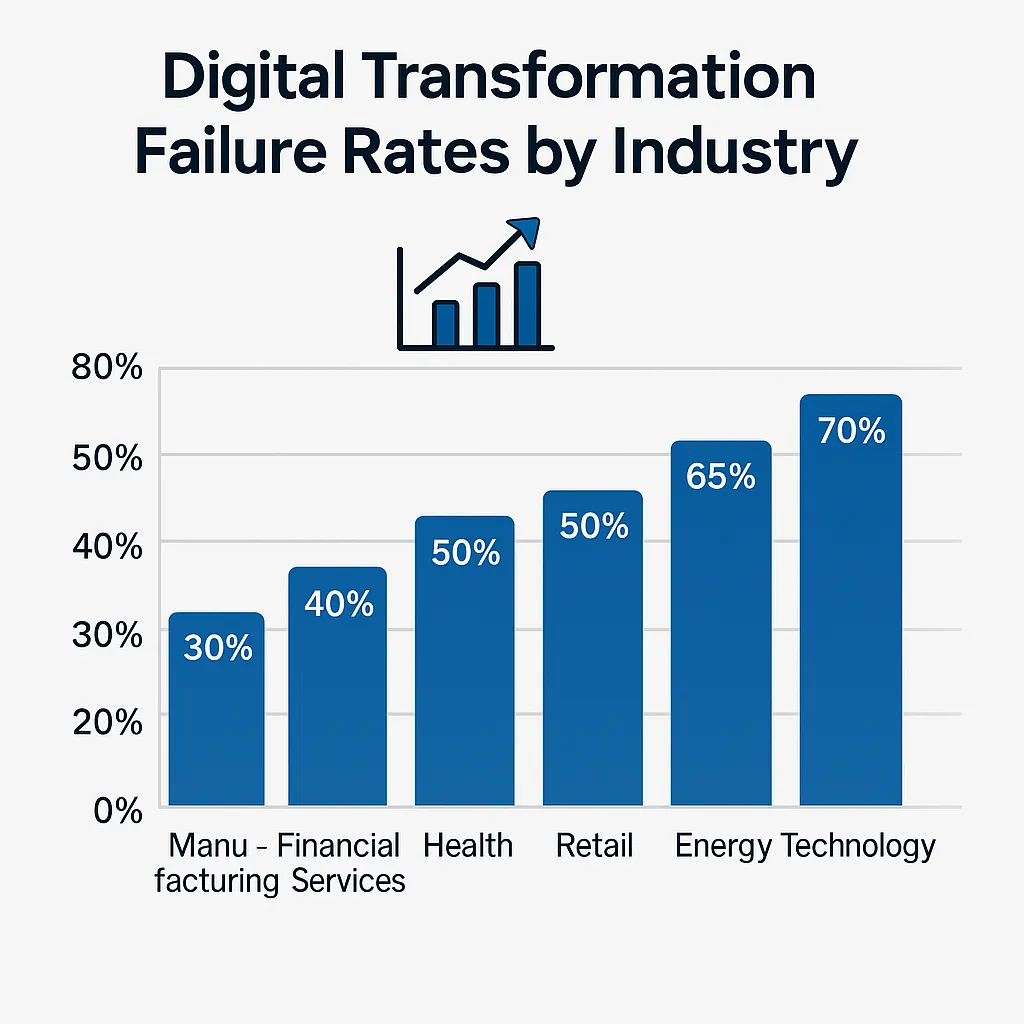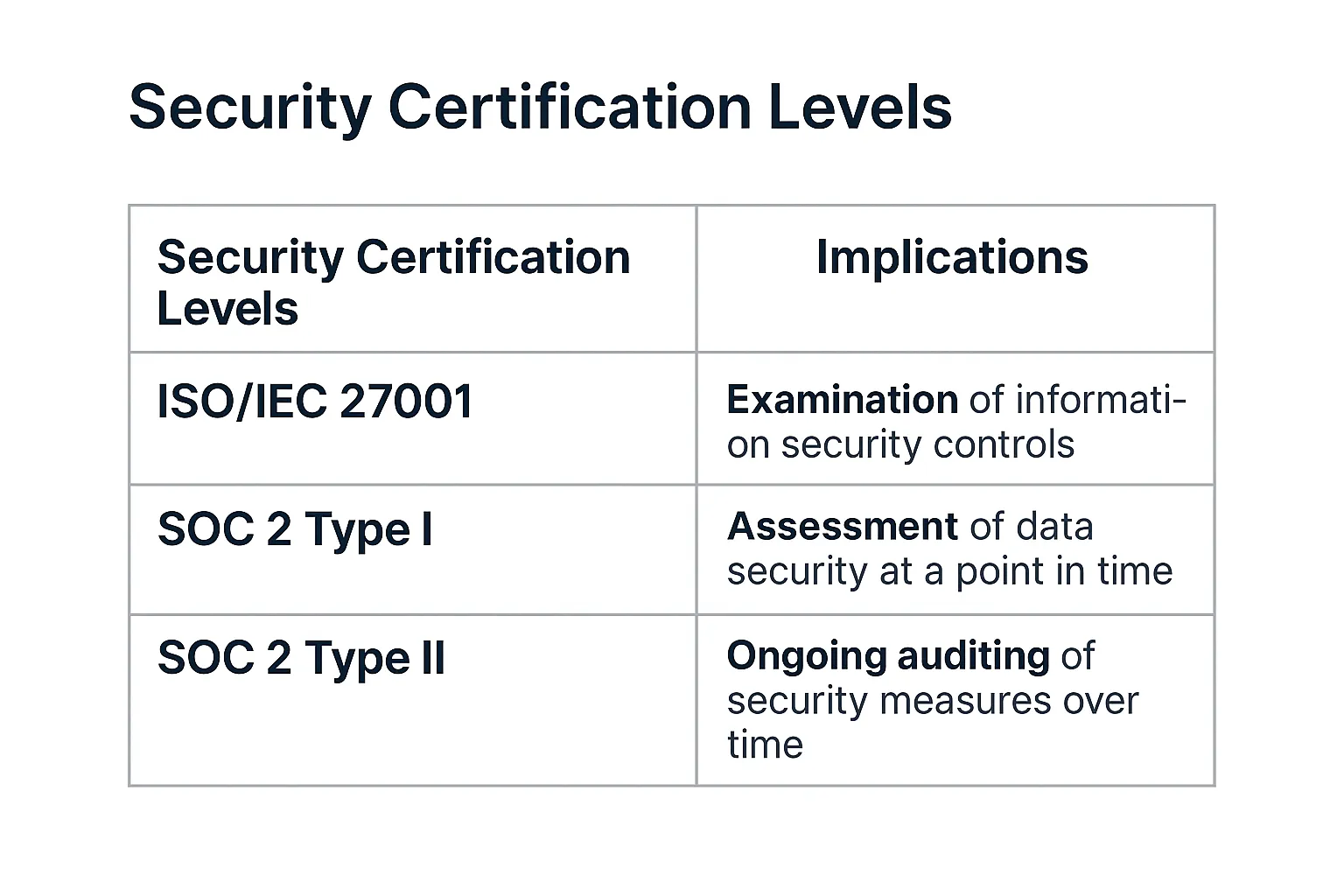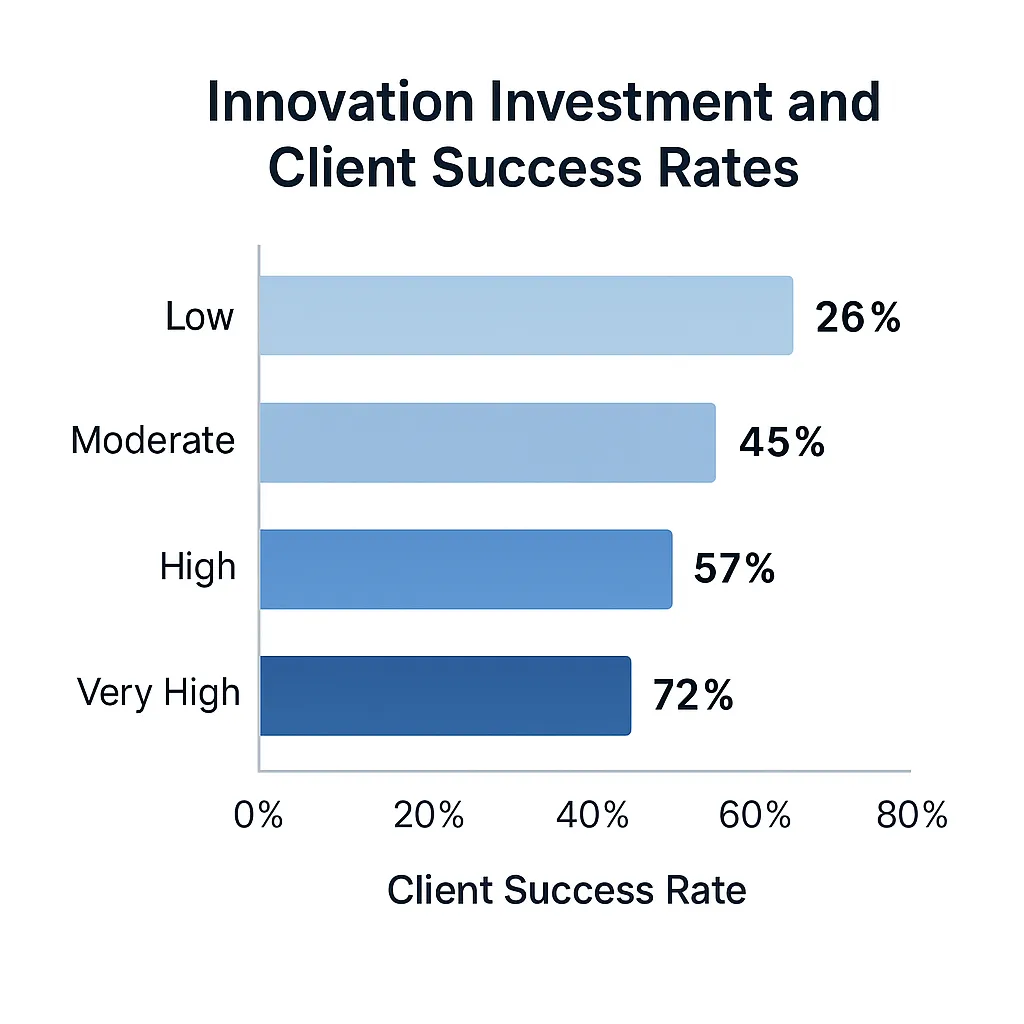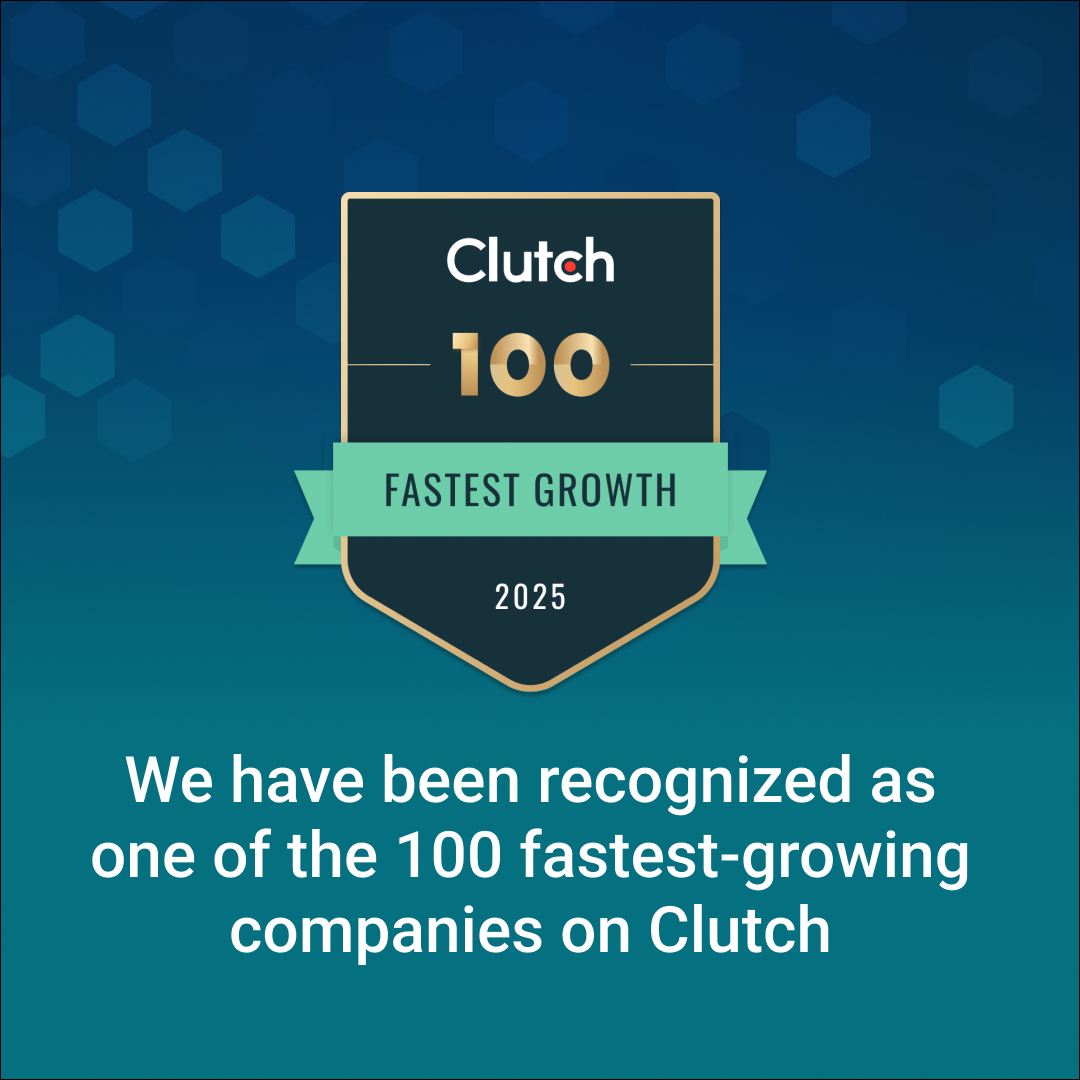The AI development market is flooded with vendors making big promises and delivering disappointing results. 70% of digital transformation projects (including enterprise AI initiatives) fail to achieve their objectives, and collectively cost organizations trillions of dollars annually.
Meanwhile, 90% of organizations are undergoing digital transformation, making your choice of AI development partner absolutely critical.
Traditional procurement processes fall short for AI projects. You need specialized competencies, proven methodologies, and vendors who understand that AI amplifies human expertise rather than replacing it. The wrong partner can derail your entire digital strategy. The right one becomes your competitive advantage.
This checklist gives CTOs and procurement teams a data-driven framework to evaluate AI development partners. We’ll walk you through 15 critical assessment points backed by industry benchmarks, performance metrics, and proven evaluation criteria.

Fig.1 Digital transformation failure rates by industry
Key Takeaways: What You’ll Learn From This Evaluation Framework
Selecting the right AI development partner requires evaluating technical expertise, certification levels, delivery methodologies, and proven ROI metrics.
This comprehensive checklist helps CTOs make data-driven vendor decisions based on 15 critical assessment points that predict project success.
Use this checklist to:
- Assess technical competency across 5 critical areas
- Evaluate methodology and process maturity (4 key factors)
- Measure business delivery excellence (4 performance indicators)
- Identify red flags that signal partnership risks
Why AI Partner Categories Matter More Than You Think
Not all AI development partners operate at the same level. Traditional software companies adding AI services represent 60% of the market but often lack the specialized expertise that modern AI projects demand.
Pure-play AI startups offer innovation but frequently struggle with enterprise delivery experience. Hybrid AI-first companies combine proven development methodologies with deep AI specialization.
The performance differences are significant. According to SmartDev’s internal research, AI-native companies deliver projects 30%-40% faster time-to-market compared to traditional vendors. Partners with certified AI practitioners show 35% fewer post-implementation bugs.
Most importantly, vendors using human-AI collaborative approaches deliver 3x better code quality metrics than those relying purely on automated solutions.
“Hybrid AI-native companies outpace legacy vendors in speed, quality, and innovation—delivering faster launches and superior ROI,” explains Luan Nguyen, General Director at SmartDev. This performance gap widens when you factor in long-term support, scalability requirements, and ongoing optimization needs.
The market is consolidating around three distinct categories:
- Legacy vendors retrofitting AI capabilities (60% of market)
- Venture-backed AI startups with limited enterprise experience (22% of market)
- Established AI-first companies that understand both innovation and delivery (18% of market)
Your choice determines whether you’re getting experimental technology or production-ready solutions.
Technical Competency Assessment: 5 Critical Evaluation Points
Point 1: Certified AI Developers Are Non-Negotiable
Your AI partner’s team needs verifiable expertise, not just marketing claims. Look for partners where 100% of assigned developers hold recognized AI certifications.
The best vendors implement tiered certification systems with clear competency levels: AI Practitioner for basic GitHub Copilot usage, AI Power User for advanced workflow optimization, and AI Integrator for custom GPT development.
According to SmartDev’s data, partners with structured AI competency frameworks deliver 25% more predictable outcomes because certification creates consistency across development teams. Without formal AI training, developers default to traditional coding approaches that miss AI’s acceleration potential.
“A competency framework rooted in tiered AI certifications boosts both consistency and project predictability,” notes Nguyen Le, COO at SmartDev. Ask for certification matrices, not just claims about “AI-trained” developers.
Point 2: AI Tool Integration Goes Beyond Basic Autocomplete
Modern AI development requires fluency with GitHub Copilot, Cursor, and enterprise AI platforms. Your partner should demonstrate proficiency beyond basic autocomplete features. Teams using AI-assisted workflows achieve 30% faster pull request turnaround times when they’ve mastered prompt engineering and AI-human collaboration patterns.
Evaluate their custom GPT and AI copilot development capabilities. Can they build internal tools that accelerate your specific workflows? Do they understand prompt optimization for different development contexts? These skills separate real AI practitioners from vendors who’ve simply licensed AI tools.
Key evaluation questions:
- Can they demonstrate AI-accelerated development workflows?
- Do they show measurable productivity improvements in their own processes?
- Can they build custom AI tools for your specific use cases?
Point 3: Full AI Development Lifecycle Coverage Prevents Vendor Fragmentation
Avoid vendors who excel at one AI discipline but stumble elsewhere. Your partner needs demonstrated expertise spanning AI strategy, model development, integration, and ongoing optimization. Partners covering the full AI lifecycle reduce vendor management overhead by 50% because you’re not coordinating multiple specialists.
Confirm their experience with:
- Natural language processing (NLP)
- Computer vision applications
- Custom AI model creation
- Data preprocessing and model deployment
- Performance monitoring and optimization
Full-lifecycle expertise matters because AI projects evolve rapidly. Today’s chatbot becomes tomorrow’s intelligent process automation system. Your partner needs the breadth to grow with your ambitions.
Point 4: Technology Stack Alignment Reduces Integration Complexity
AI development amplifies technology mismatches rather than hiding them. Verify your partner’s expertise aligns with your existing infrastructure—AWS, Azure, or Google Cloud. Technology alignment reduces integration complexity by up to 40% because developers can work with existing tools and processes.
Check their proficiency in relevant programming languages and frameworks for your industry. A partner strong in Python but weak in Java won’t accelerate your enterprise Java applications, regardless of their AI capabilities.
The best AI partners adapt their approach to your technology landscape rather than forcing you to adopt theirs. This flexibility indicates mature development practices and client-centric thinking.
Point 5: Security Standards Must Include Human Validation
AI amplifies security risks if not handled properly. Require partners with ISO/IEC 27001 and SOC 2 Type II certifications as minimum standards. These aren’t just checkboxes—they indicate systematic approaches to data protection and process security.
Look for transparent codebase practices where human developers validate all AI-generated code. Industry experts consistently emphasize that human oversight is critical for AI project success because it prevents the quality issues that plague fully automated approaches.
“AI accelerates development, but rigorous human validation is essential for security, customization, and regulatory compliance,” explains Alistair Copeland, CEO at SmartDev. Security-conscious AI development requires human judgment at every critical decision point.

Fig.2 Security certification levels and their implications
Methodology and Process Evaluation: 4 Key Performance Factors
Point 6: Human-AI Collaboration Delivers Superior Results
The most successful AI development partnerships balance AI acceleration with human oversight. Your partner should articulate how they blend AI efficiency with human creativity, judgment, and quality control.
According to SmartDev’s research, human-AI synergy approaches deliver 20% higher team productivity gains compared to purely automated or purely manual approaches.
Look for transparent processes where humans validate and improve AI-generated outputs. The best methodologies use AI to accelerate routine tasks while humans focus on:
- Architecture decisions
- Security reviews
- Business logic validation
- Quality assurance oversight
This balance prevents the quality issues that plague fully automated development approaches while maximizing AI’s acceleration benefits.
Point 7: Agile Practices Need AI-Specific Modifications
Traditional Agile practices need updating for AI-accelerated development. Your partner should demonstrate experience integrating AI tools with sprint planning, code review processes, and quality assurance methodologies. AI-optimized Agile practices reduce manual QA effort by 50% while maintaining quality standards.
Evaluate their AI-specific testing approaches:
- How do they validate AI-generated code?
- What quality gates prevent AI shortcuts from introducing technical debt?
- How do they modify sprint ceremonies for AI acceleration?
These processes determine whether AI acceleration helps or hurts long-term project health.
Point 8: Training Capabilities Reduce Long-Term Dependency
AI adoption requires more than technical implementation—it demands organizational change management. Partners providing comprehensive training increase long-term project success rates by 45% because they prepare your internal teams for AI-accelerated workflows.
Assess your potential partner’s ability to:
- Train your developers on AI tools and processes
- Offer ongoing education programs
- Transfer AI competencies to your internal teams over time
The goal isn’t vendor dependency—it’s building internal AI literacy that reduces your reliance on external partners while maximizing the value of AI investments.
Point 9: Scalability Planning Prevents Expensive Rebuilds
AI solutions need to scale with business growth, not become bottlenecks. Evaluate your partner’s track record building AI systems that handle increasing data volumes, user loads, and functionality requirements. Scalable AI architectures reduce long-term operational costs by 35% compared to solutions requiring complete rebuilds.
Look for experience with:
- AI model performance optimization
- Cost efficiency improvements
- Operational implications of different AI deployment patterns
Scalability expertise prevents the expensive rebuilds that plague AI projects designed without growth considerations. Your partner should architect for tomorrow’s requirements, not just today’s.
Ready to select the right AI strategy development partner—without risking budget, timelines, or technical debt?
Discover the 15-point evaluation framework CTOs and procurement teams use to assess AI partners across technical capability, governance, risk management, delivery maturity, and long-term scalability.
Compare vendor competency, solution architecture standards, security compliance, cost-to-value alignment, and real-world delivery performance to determine which AI strategy partner can support sustainable enterprise transformation.
Explore the 15-Point AI Partner Evaluation ChecklistBusiness and Delivery Excellence: 4 Performance Indicators
Point 10: Quantified ROI Metrics Beat Marketing Claims
Demand specific, measurable performance improvements from potential partners. The best AI development vendors document metrics like 30% faster product launches, 40% fewer post-release bugs, and 20% productivity gains. Generic success stories won’t help you predict results for your specific use case.
Look for case studies in your industry or similar technical contexts. Can they show how AI acceleration translated into business value for comparable organizations? According to SmartDev’s analysis, partners with quantified success stories deliver 2x better business outcomes because they understand how to measure and optimize for results.
“Tangible ROI is the only metric that matters. If your partner can’t deliver numbers, keep searching,” emphasizes Ha Nguyen Ngoc, Marketing Director at SmartDev.
Point 11: Industry Experience Reduces Implementation Risk
AI implementation challenges vary significantly across industries. Industry-specialized partners reduce project risk by 50% because they understand regulatory requirements, common technical patterns, and business priorities specific to your sector.
Prioritize partners with deep expertise in your industry—whether that’s fintech, healthcare, manufacturing, or other verticals. Critical questions include:
- Do they understand your compliance requirements?
- Have they solved similar technical challenges before?
- Can they demonstrate domain-specific AI implementations?
Generic AI expertise doesn’t translate automatically to industry-specific success. Domain knowledge accelerates development and reduces expensive trial-and-error learning.
Point 12: Global Communication Standards Enable Distributed Success
AI development often involves distributed teams, making communication quality critical for success. Strong communication capabilities improve project delivery predictability by 60% because misunderstandings compound quickly in fast-moving AI projects.
Evaluate key factors:
- English proficiency rates across development teams
- Time zone coverage for real-time collaboration
- Project management methodologies for offshore development
The best global AI partners combine international talent with communication standards that make distributed development feel seamless rather than challenging.
Point 13: Cultural Alignment Affects Long-Term Partnership Success
Cultural fit affects every aspect of AI project success, from communication patterns to quality expectations. Consider partners who combine international quality standards with competitive pricing structures. Cultural alignment reduces project friction and improves collaboration effectiveness by eliminating mismatched expectations.
Evaluate work culture compatibility and long-term partnership potential:
- Do they share your organization’s values around quality and transparency?
- Can you build trust with their leadership team?
- Do their business practices align with your corporate standards?
AI development partnerships extend beyond individual projects. Cultural alignment determines whether you can scale the relationship as your AI ambitions grow.
Risk Assessment: 2 Critical Partnership Sustainability Factors
Point 14: Financial Stability Enables Long-Term AI Success
AI development requires stable, long-term partnerships because AI systems need ongoing optimization and support.
Assess your potential partner’s revenue growth, client retention rates, and market position. Financially stable partners provide 40% better long-term support reliability because they can invest in R&D and maintain experienced teams.
Look for partners demonstrating consistent growth rather than volatile expansion. For example, SmartDev achieved 175% revenue growth in 2022 while maintaining client satisfaction, indicating sustainable business practices rather than unsustainable scaling.
Financial stability also indicates the ability to attract and retain top AI talent, which directly affects the quality of your development team.
Point 15: Innovation Investment Protects Against Technical Obsolescence
AI technology evolves rapidly, making your partner’s innovation investment critical for long-term success. Evaluate their R&D spending on emerging AI technologies and participation in AI research communities.
According to SmartDev’s analysis, innovation-focused partners help organizations stay ahead of 75% of competitors by incorporating advanced capabilities into client projects.
Look for industry recognition, awards, and thought leadership that indicate genuine innovation rather than marketing positioning:
- Do they contribute to AI conferences and publish research?
- Have they won technology awards or industry recognition?
- Do they invest in emerging AI technologies before they become mainstream?
The most future-ready partners invest heavily in understanding where AI technology is heading, not just where it is today.

Fig.3 Innovation investment correlation with client success rates
Red Flags: Warning Signs That Should Trigger Immediate Concern
Several warning signs should end your evaluation process immediately. Partners claiming 100% AI automation without human oversight pose significant quality and security risks. Vendors unable to provide specific AI performance metrics likely lack real implementation experience, despite marketing claims.
Critical red flags include:
- No relevant industry certifications (increases compliance and security vulnerabilities)
- Inability to demonstrate AI tool proficiency beyond basic features
- Lack of human validation processes for AI-generated code
- No quantified performance metrics from previous projects
- Promises of revolutionary results without incremental success examples
Common procurement mistakes compound these risks:
- Procurement teams prioritizing lowest cost over AI expertise face 80% higher project failure rates
- Ignoring developer certification levels results in suboptimal AI implementation quality
- Failing to assess cultural fit creates communication barriers affecting 65% of projects, particularly in distributed development scenarios
Industry experts consistently emphasize that the cheapest AI development partner is usually the most expensive in total cost of ownership once you factor in delays, rework, and missed opportunities.
Implementation: Turn This Checklist Into Actionable Vendor Evaluation
Transform this checklist into a practical evaluation tool by assigning weighted scores based on your organization’s specific priorities.
Technical competency should represent 40% of total evaluation criteria for most AI development projects, with methodology and business excellence sharing the remaining weight.
Recommended scoring framework:
- Technical Competency (40%): Points 1-5 from this checklist
- Methodology & Process (30%): Points 6-9 evaluation criteria
- Business Excellence (20%): Points 10-13 assessment factors
- Risk & Sustainability (10%): Points 14-15 partnership factors
Create a standardized scoring matrix that allows objective vendor comparison. Use this framework as your RFP foundation to ensure all potential partners address the same critical criteria. Standardized RFPs correlate with 22% higher project ROI because they force vendors to provide concrete evidence rather than generic promises.
Document your evaluation rationale for future vendor relationship management. The scoring process itself often reveals organizational priorities and requirements that weren’t obvious initially.
“Customizing your score weighting is essential—each organization’s priorities differ. Use data-driven rationale for every partner decision,” advises Nguyen Le, COO at SmartDev.
Adapt checklist points based on project complexity and organizational AI maturity:
- Early-stage AI adopters: Weight training and change management higher (Points 8, 13)
- Organizations with existing AI capabilities: Focus on technical integration and scalability factors (Points 4, 9)
Making Your Strategic AI Partner Decision
The right AI development partner becomes an extension of your internal capabilities rather than just a vendor. According to industry research, long-term AI partnerships reduce technology debt by 50% and accelerate AI maturity by 32% compared to project-by-project outsourcing approaches.
Think beyond individual project success to strategic capability building:
- Can this partner help you develop internal AI literacy?
- Will they transfer knowledge rather than maintaining dependency?
- Do they have the financial stability for long-term partnership?
Based on McKinsey research, clients with established success criteria and ongoing vendor reviews report significantly greater satisfaction and project velocity. Set clear expectations from project inception and build evaluation processes that optimize the partnership over time.
Your AI development partner choice determines whether you’re buying tactical development services or strategic competitive advantage. Use this checklist to make data-driven decisions that accelerate your AI transformation while building sustainable organizational capabilities.
The investment in thorough partner evaluation pays dividends throughout your AI journey. Choose wisely, measure consistently, and build partnerships that grow with your ambitions.
Ready to evaluate AI development partners using these criteria? Contact SmartDev’s certified AI specialists to discuss your specific requirements and see how our human-AI collaborative approach delivers measurable results for organizations across 16 countries.








